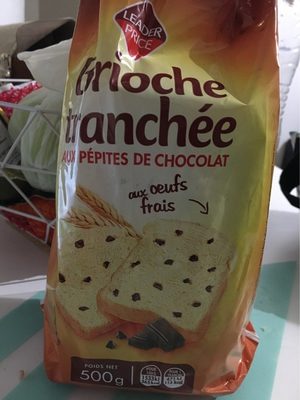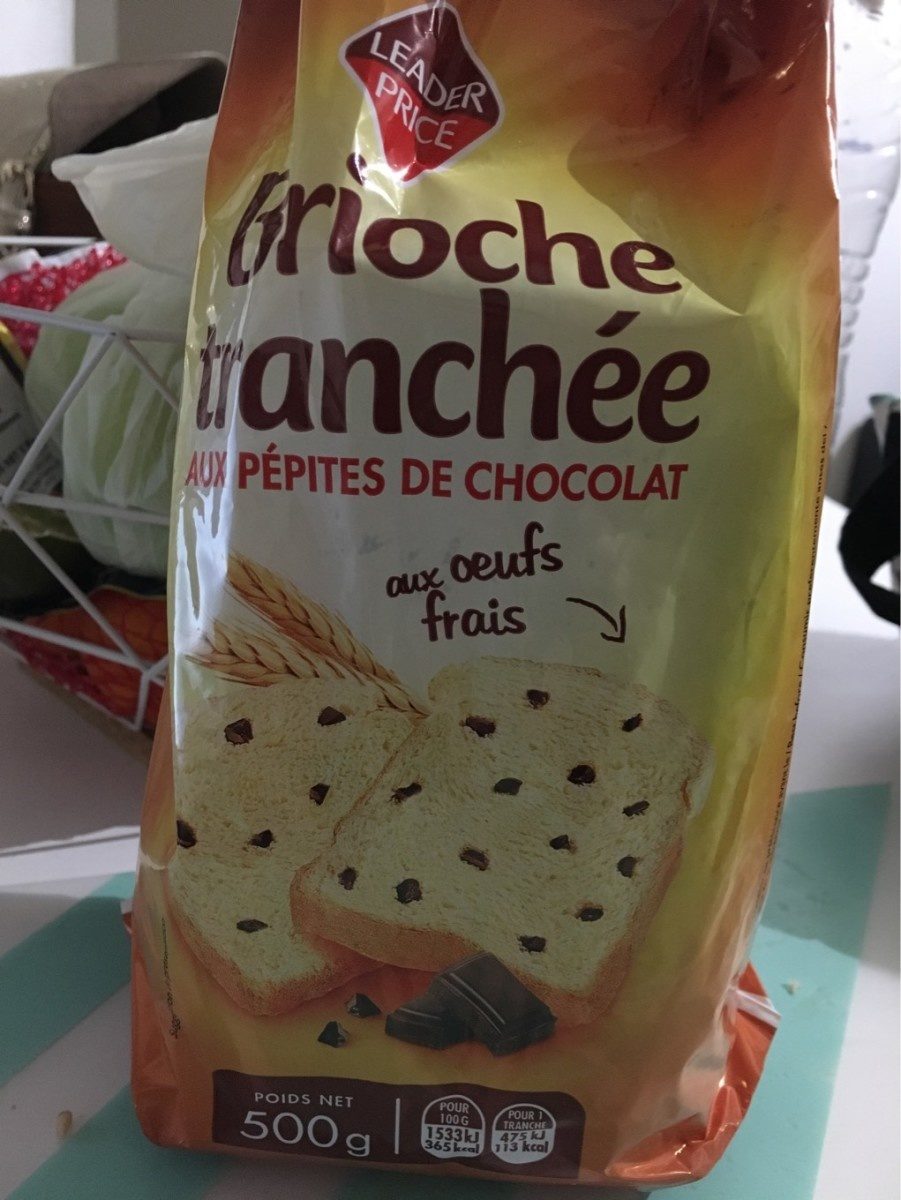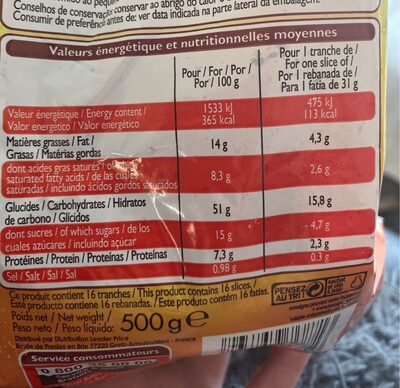Brioche Tranchée aux Œufs Frais aux Pépites de Chocolat - Leader Price - 500 g
This product page is not complete. You can help to complete it by editing it and adding more data from the photos we have, or by taking more photos using the app for Android or iPhone/iPad. Thank you!
×
Barcode: 3263859768713 (EAN / EAN-13)
Common name: recategorisation du product_id 1787768 | excatego:115 | exns:D/12
Quantity: 500 g
Brands: Leader Price
Categories: Snacks, Sweet snacks, Sweet pastries and pies, Viennoiseries, Brioches, Brioche filled with chocolate drops
Stores: Leader Price
Countries where sold: France
Matching with your preferences
Environment
Carbon footprint
Packaging
Transportation
Report a problem
Data sources
Product added on by kiliweb
Last edit of product page on by quechoisir.
Product page also edited by aleksachasch, desan, openfoodfacts-contributors, roboto-app, tacite-mass-editor, teolemon, yuka.Eo5pIMWoPO8kJsjKir0Z-je-K8q7GP5iCXoPoQ, yuka.ZWZFUlAvZ092L283aXRzRjkwTHMxZk51eTVHVVVtMndKYmRQSUE9PQ.










